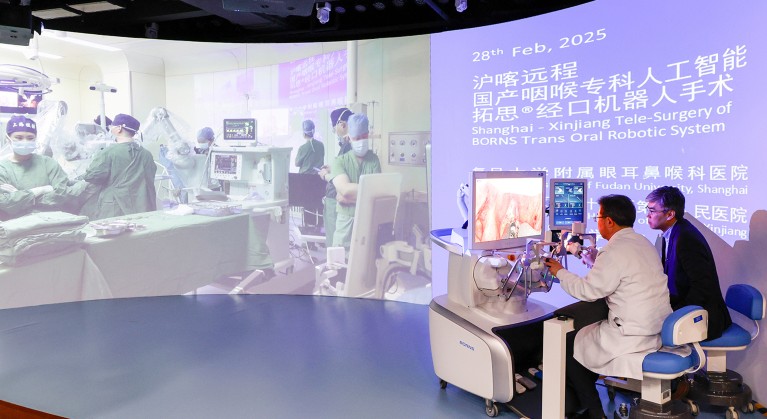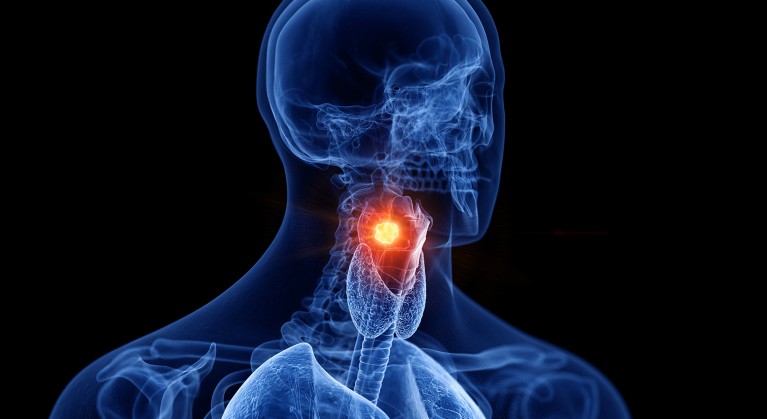Robot boosts head and neck surgeries

To remove head and neck tumours, surgeons must navigate intricate networks of nerves and blood vessels, as well as the brain and spine, says Yao Li, a robotic scientist at Stanford University, in the United States, and founder of Borns Medical Robotics.
Traditional open surgery has long recovery times and significant bleeding risks. Current minimally invasive technologies, including microscopes and endoscopes, are often too rigid to navigate the curved anatomy of the throat and oral cavity. This makes it difficult for surgeons to see critical areas they’re operating on, says Lei Tao, a surgeon at Fudan University’s Eye, Ear, Nose, and Throat (EENT) Hospital, in Shanghai, where he serves as the director of head and neck surgery.
“Even minor deviations can lead to irreversible damage,” Tao adds.
Video game vibes
Borns Medical Robotics is a company based in California’s Silicon Valley, and in Chengdu, China. Its latest invention, the Transoral Surgical Robot System (TORSS), offers a highly precise method for performing head and neck surgeries.
TORSS consists of three robotic arms and a console equipped with an imaging system and controllers resembling the gamepads of a sophisticated video game. Using these tools, the surgeon can deftly manipulate two flexible instruments with seven degrees of freedom, navigating cavities as tiny as three millimetres across.
Lei Tao, a surgeon at Fudan University’s Eye, Ear, Nose, and Throat Hospital uses TORSS to perform a tele-operation to remove a tumour near a patient’s vocal cords.Credit: Bornsmedical
One key advantage of the technology is it’s non-invasive. “With transoral surgery and minimal bleeding, patients can eat and speak the day after their procedures,” says Tao. “Without TORSS, it would take months for a patient with open surgery to recover, and they may suffer from permanent loss of voice.”
“TORSS is flexible enough to go into all small, narrow spaces,” explains Li. Its flexible visualization system provides high-resolution imaging with enhanced depth perception, allowing surgeons to operate with great precision, he says.
This innovation could lead to significantly shorter operation times, reduced tissue trauma and bleeding, and faster recovery, say Tao. These possibilities were explored in a phase one clinical trial conducted by Borns in China last year1.
New benchmarks
The new surgical robot came from four years of close collaboration between Borns and Fudan University. “Our doctors outlined their treatment needs and explained key surgical challenges, which Borns’ engineers translated into a functional product,” explains Xingtao Zhou, director of the EENT Hospital.
The intricate structure of the oral cavity and the throat makes it challenging for surgeons to remove head and neck tumours.Credit: Sebastian Kaulitzki/Science Photo Library/Getty
Using TORSS, surgeons in Shanghai performed a long-distance teleoperation on patients in Kashgar in western China early this year — potentially improving healthcare access in rural areas, says Zhou.
Borns is now planning new clinical trials involving larger patient cohorts. The team is also working to expand the system’s functionality by integrating new tools and AI-driven controls while collecting more operational data to improve the automation of the robot.
As TORSS is still undergoing clinical trials, it is yet to receive approval as a medical device in China or other regions including the EU, UK and US.
“We want to make TORSS easier to use, and smarter, ultimately offering cancer patients a new treatment solution,” says Li.
link





